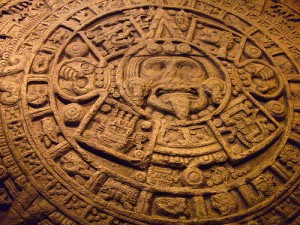
This week, Dr. Reeves talks about lessons that were learned from Mount St. Helens. As you may know, Mount St. Helens erupted back in May of 1980 after being preceded by a long series of earthquakes. When it erupted, the top north side of the mountain collapsed and caused a huge avalanche. As the north face slid away, it quickly exposed steam rich earth and rock to normal atmospheric pressure, more or less like shaking up a bottle of cola and popping the top. In response to this, the core of St. Helens exploded and the heat melted surrounding snow and created a series of massive lahars, or mudslides, that buried hundreds of square miles of the surrounding area. Dr. Reeves speaks about this event and also has an activity to show a Christian alternative as to how evolutionary science views the age of the earth.
There are many ways parents and teachers can help students challenge the evolutionary explanations for the earth’s origin and history. There are a number of questionable assumptions that evolutionary scientists make that are based on the idea that the formation of thick layers of sedimentary rock requires millions of years.
The worldwide flood described in Genesis provides a logical scientific explanation for the thick sedimentary rock layers that are found on every continent of the world. Contrast this explanation with the evolutionary explanation that they formed gradually over millions of years from shallow oceans that changed many times.
Here is a simple lesson that shows how quickly sedimentary layers can be deposited out of water. It is followed by an excerpt from an article entitled “Lessons Learned from Mount St. Helens.”
How Little Tiny Things Settle Out of Water to Become Rocks
Think About This
Anna’s house overlooked the Maple Trail Creek. After several days of hard rains, the usually clear water had become a murky brown and had overflowed the banks. The water kept rising and had gotten close to their house. Anna’s Dad finally said the flood waters were starting to recede, but most of the driveway to their house was still covered by sand, brown silt, and twigs. Where do you think these materials came from?
The Investigative Problem
What are the different settling rates (sedimentation rates) of various sizes and types of material?
Gather These Things
20-ounce water bottle with top (size may vary, but must be clear; plastic is safer)
Gravel (small pebbles)
Sand
Twigs (Very small dry pieces)
Water
Soil
Procedure and Observations
Put sand, gravel, soil, and a few small dry twigs in a 20-ounce water bottle until it is about half way full. Then add water until the bottle is about 2/3 full. You need to leave some room at the top for mixing.
1. Predict which materials you think will settle to the bottom first and which ones will be on top after they have been stirred up.
Place the top on the bottle and shake vigorously to mix. Slowly stop shaking the jar, ending with a swirling motion. Place the bottle on a flat surface and let it stand until all the materials are settled and the water becomes somewhat clear. It may take several hours for the water to become really clear, but you may begin observing the results after about 15 minutes.
2. Observe and record the order in which the materials settled. Is this what you predicted would occur?
3. Make a drawing of what you observe. Be sure to label the layers that
form.
Shake the bottle again as you did before and place it on a flat surface. Wait 15 minutes.
4. Did you get about the same results that you did the first time?
The Science Stuff
You should have noticed that materials were sorted out in order by particle size and composition. The larger heavier rocks settle out first, followed by sand, and then clay and the finer silt. The very smallest particles may remain suspended for several hours before they finally settle out. Your drawing will probably show a layer of gravel on the bottom of the jar, following by sand, then clay and silt, then humus and other materials that float. The spaces around the rocks will be filled in with sand.
The materials that are deposited by water are known as sediment. The process of depositing sediment out of water is known as sedimentation. As long as the water is moving, some of the particles may be carried along. The finer particles tend to settle out when the water stops or almost stops moving.
When deposits have settled out of water and they become hardened, they are called sedimentary rocks. Have you ever seen hardened layers of rock in road cuts that resemble the sediments in your jar?
Lessons Learned from Mount St. Helens
An evolutionary assumption: Whenever stratified layers of rock are found in exposed road cuts and other places, it is often assumed that each layer was gradually deposited and that a thick layer of stratified rock is millions of years old.
An observation:
Here is what can be observed at one exposed cliff near Mount St. Helens:
If you visit Mount St. Helens today, you will find nearby cliffs where mud, silt, and sand were laid down rapidly in horizontal layers that have since hardened into solid rock. One particular cliff is composed of three distinct sections that formed on three different days. The bottom of the cliff is made up of a thick layer of volcanic ash, which was laid down shortly after the volcano first erupted on May 18, 1980. The top layer of rock formed from a mud-flow that occurred on March 19, 1982.
The middle layer is made up of numerous layers (or strata) of rock that were laid down on June 12, 1980, in about four hours. These layers formed as the volcano released large amount of ground-hugging steam. This steam mixed with volcanic ash and flowed across the ground like a giant river. It often traveled at speeds greater than 100 miles per hour. In only a few hours, sediment from the mud-flow had been deposited in horizontal stratified layers that resembled the sediment that formed in your jar. At first the layers were somewhat like wet cement, but eventually the sediment hardened and formed stratified rock.
Do you think a worldwide flood is a logical explanation for the thick sedimentary layers found on every continent on the earth?
(The lesson and the article were taken from The Earth: Its Structure & Its
Changes by DeRosa and Reeves, MasterBooks, pages 30-31, 60-62.)




